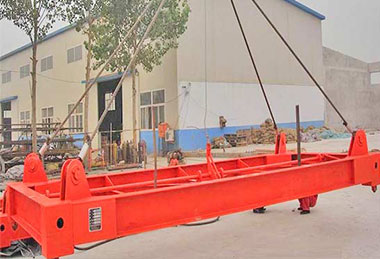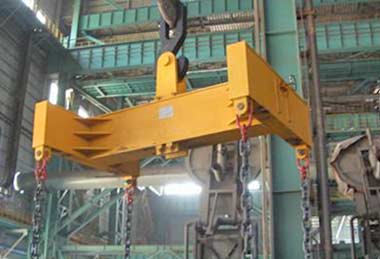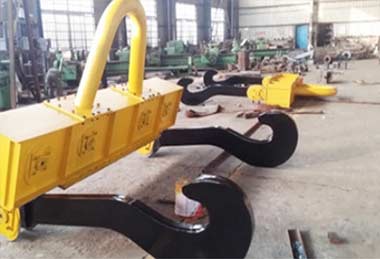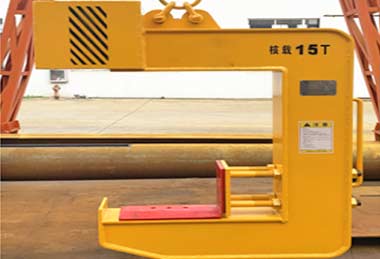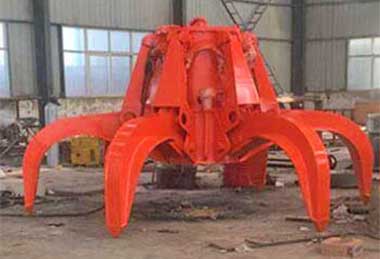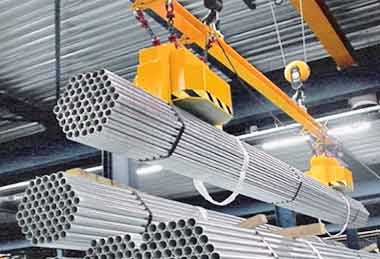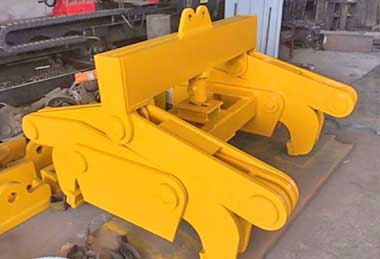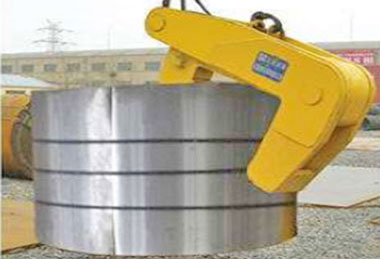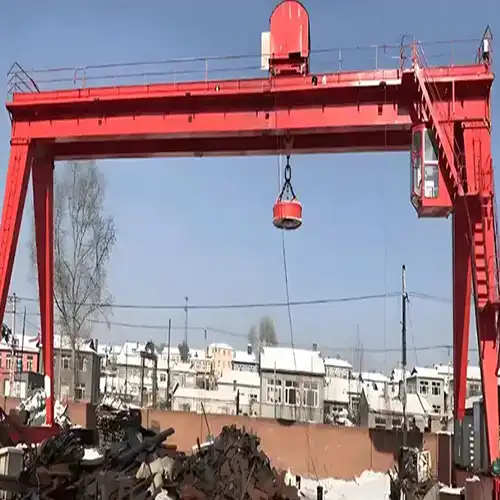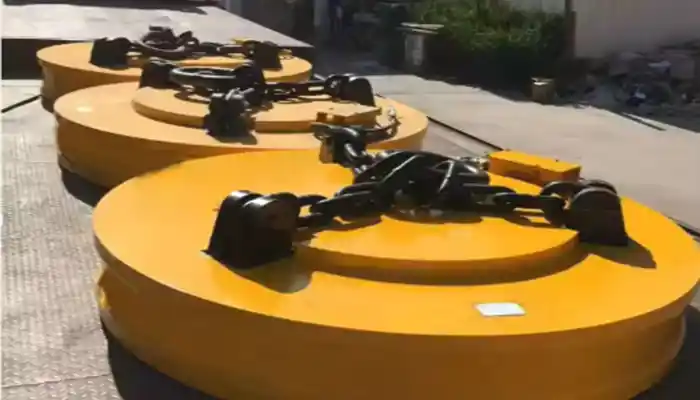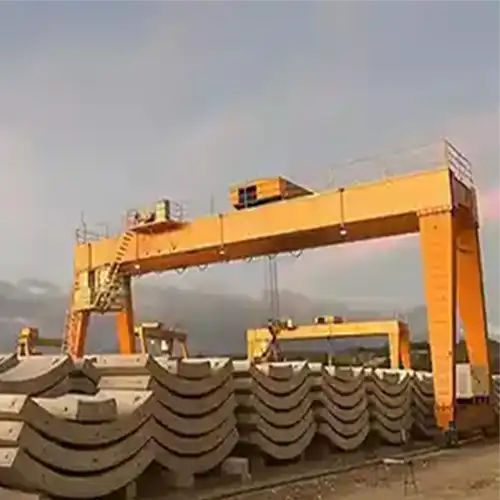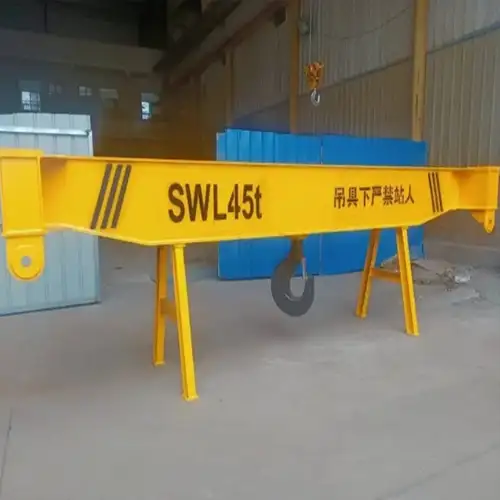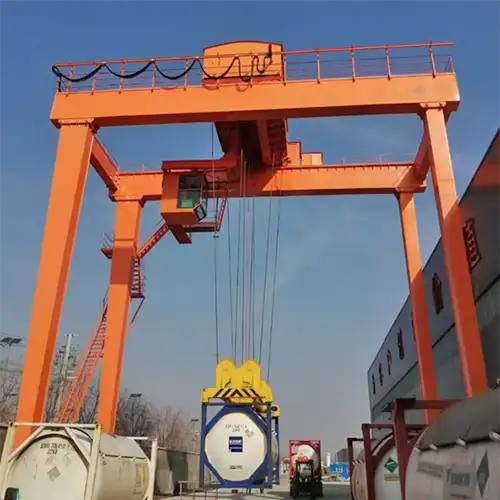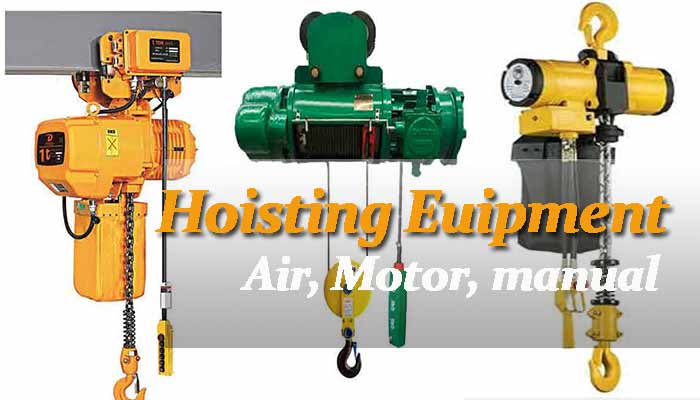
What are Hoisting Equipments? Hoists & Hoisting Equipment
What are hoisting equipment ? Types of hoists and hoisting equipment for vertical lifting with overhead cranes, workshop cranes, workstation cranes,to lift freely suspended, big, bulky loads vertically. Their lifting capacities are determined by their design. An operator directs their movement, either physically or using a wired pendant station or wireless controls. Helping operators in manufacturing, warehousing, and construction lift loads in support of production or storage activities, loading and unloading, or moving from one process to the next are examples of typical applications.
- Hoisting equipment uses either link or roller chain or wire rope to raise loads. It can be propelled in one of three ways and can be used with a variety of attachments to help lift heavy loads, including:
- Manual hoists, also known as lever hoists, ratchet lever hoists, ratchet hoists, or wire rope pullers, lift a load under the control of an operator who typically raises and lowers a lever to activate a ratchet and pawl configuration that incrementally lifts or lowers the load, or to apply or release tension. Hand chain hoists are a form of manual hoist that lifts or lowers a weight using a hand chain.
- Pneumatically driven motors power air hoists or pneumatic hoists. They are known as air chain hoists when they have a chain as the hoisting mechanism. They are also known as air wire rope hoists when they are fitted with a wire rope as the lifting medium. These hoists are frequently employed in locations where an electric spark must be avoided due to the presence of a potentially explosive atmosphere.
- Electric hoisting equipment are propelled by motors that are powered by electricity.

Hook mounted chain fall eletric hoisting equipment
Hook mounted, lug mounted, eye mounted chain fall eletric hoisting equipments with no trolley up to 32 ton

Electric trolley chain hoist
Motorized trolley & electric trolley electric chain hoists up to 35 ton

Maual trolley electric chain hoist
Manual trolley electric chain hoists up to 30 ton

Low headroom chain eletric hoisting equipment up to 35 ton
Low headroom chain fall eletric hoisting equipments are specially designed for workshop with limited working space.

Fixed Type Wire Rope Hoist
- Lifting Capacity:0.25t to 50t
- Lifting Height: 3m to 100m
- Lifting Speed: 0.33~8,Single or Dual Speed
- Working Class: M3, M4
- Ambient Temperature: -20℃ to 40℃

Travelling Wire Rope Hoist
- Lifting Capacity:0.25t to 50t
- Lifting Height: 3m to 100m
- Lifting Speed: 0.33~8,Single or Dual Speed
- Working Class: M3, M4
- Ambient Temperature: -20℃ to 40℃

Double girder hoist crane
- Lifting Capacity:0.25t to 50 ton
- Lifting Height: 3m to 100m
- Lifting Speed: 0.33~8,Single or Dual Speed
- Working Class: M3, M4
- Ambient Temperature: -20℃ to 40℃

Single girder hoist crane
- Lifting Capacity:0.25 ton to 50 ton
- Lifting Height: 3m to 100m
- Lifting Speed: 0.33~8,Single or Dual Speed
- Working Class: M3, M4
- Ambient Temperature: -20℃ to 40℃

Hook Mounted Air Hoist
Hook mounted air hoist is for material handling in a fixed application, which offers flexiable vertical lifting but less flexibility horizontally.

Trolley Air Hoist Powered by Air Motor
With an air powered motor, the air hoists can transport a suspended load horizontally and efficiently.

Wire Rope Air Hoist
The wire rope air hoist is a lightweight type of air Hoist which is equipped with a wire rope.

Air Balancer
The air balancer can be used in various applications with high safety, efficiency and good price.
Below hook devices
End effectors, sometimes known as "below the hook" equipment: To manage the hoisting or placement of various loads, a number of different, application-specific attachments can be added to the hoist. These are some of them:- A C hook is a device that allows you to hoist a coil by inserting a hook into the coil's inner diameter. For extra load management, a motorized hook rotator rotates the hook attached to the bottom block of a hoist.
- Gripping lifters hold a load with friction or indentation-causing pressure.
- Tong grips or clamps hold a load with a scissor-like movement.
- Coil lifter: To raise or turn a coil, coil grabs use tongs or gripping mechanisms to grasp the outer diameter of the coil.
- Manual lifter: When manually activated, mechanical lifters are made up of two or more stiff pieces that move in unison to secure the load.
- Vacuum lifters:To connect the lifter to an object, vacuum lifters use an electric-powered extraction pump and sealed pads to produce a vacuum.
- Sheet lifters wrap two claws around the edges of a load of sheet metal or wood to grip it. The sheet is kept from falling out of the lifter by a lip on the lower half of the claws.
- Pallet lifters work with forks to lift pallets from the ground.
- Multiple load hoisting points are provided by hoisting beams made of solid or manufactured metal, or from wood, suspended from a hoist/crane for improved security and control of the load's movement. Spreader beams use two or more hooks to distribute the load across many hoisting points.
- With or without an electrical power supply, magnets lift, carry, or release flat or spherical ferrous objects.
- Slings or strap hoists composed of nylon, polyester, wire rope, or chain are used to transfer goods that are too huge and unwieldy to be moved in any other method, such as steel coils or sheets.
- Drum turners rotate drums to fill and empty them.
Applications of hoisting equipment
Hoisting equipment is used in a variety of areas to support processing and handling throughout a facility:
- Assembly: Getting things moving through the manufacturing process
- Positioning: Obtaining a component for future work
- Transportation: Final product loading onto open trailers or railcars
- Staging: Work-in-progress is being held for future production procedures.
- Storage: Heavy goods must be transported to and from storage areas.
- Warehousing: Transporting huge, heavy items to and from docks
Hoisting equipment provides a variety of benefits:
- Customizable – To handle a wide range of items and loads, hoisting equipment can be adapted with below-the-hook attachments, end effectors, or specialty tools.
- Ergonomics – Hoisting equipment relieves operators of the burden of heavy lifting, reducing tiredness and the risk of harm.
- Flexible – Hoisting equipment may readily be re-fitted to allow for greater hoisting capacity.
- Indoor/outdoor use – Hoisting equipment can be utilized both inside and outside of a facility, on the dock or in the yard.
- Lower maintenance costs – Hoisting equipment, which incorporates the newest technology and is available in a variety of usage and capacity ratings, requires less maintenance than other hoisting devices.
- Portable – Transporting hoisting equipment from job to job or site to site is simple.
- Positioning – It's easy to transport lifting equipment from one work to the next or from one location to another.
- Reduction in product damage – Products are treated gently to reduce damage by allowing for smooth, direct-path hoisting over obstacles—with soft start features, several speed options, and a range of end effectors to interface with and secure the load.
- Safety – Hoisting equipment is less prone than forklift traffic to maneuver a cargo into personnel, walls, machinery, or other impediments because they operate overhead and work in a defined region.
Industries of hoisting equipment
Hoisting equipment assists in the hoisting and positioning of large, heavy loads in a variety of industries, including:
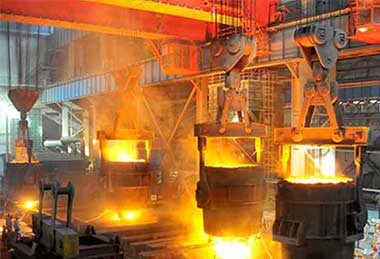
Metal Processing Industrial
Iron, steel, aluminum & basic metal processing industry cranes. Industry cranes for metal process- EAF charging & ladle crane, forging crane, finished product crane & scrap crane - for metallurgy harsh conditions, safe overhead travelling crane.
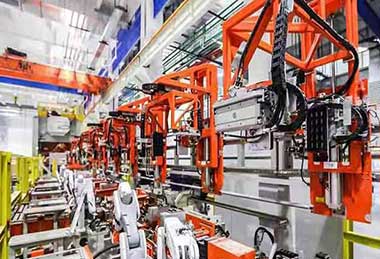
General Manufacturing
Types of industrial hoist & cranes for general manufacturing- Various types of industrial overhead crane systems for multiple sectors of manufacturing, integrated solution, maximum productivity, cost-effective price.
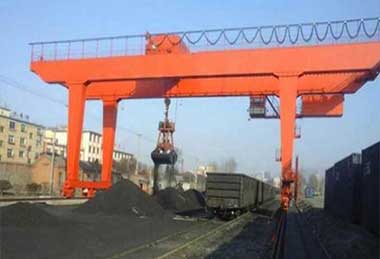
Mining Industry
Mining industry cranes, Coal mine crane systems - Safe industrial overhead crane & industrial gantry crane system for ore, limestone, coke, coal, slag, loose clay handling, explosion proof and durable.
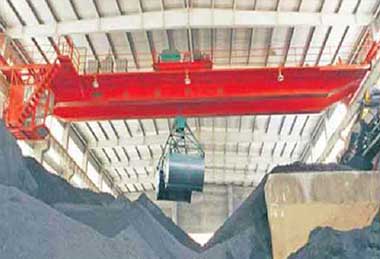
Energy Industry
Energy generation|Industrial cranes for types of power plants - Industrial cranes & hoists systematic solutions for various power plants,i.e, traditional fuel power & waste renewable energy, wind power, hydroelectric, biomass energy, etc.
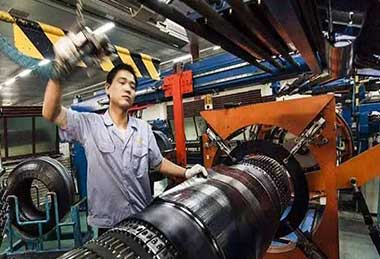
Machinery and Equipment
Industrial material handling cranes for mechanical engineering- Material handling cranes for mechanical engineering industry - overhead industrial crane solution for manufacturing of light & heavy machinery & equipment.
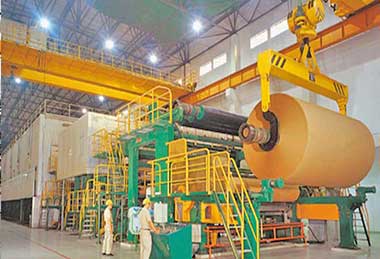
Pulp & Paper Industry
Pulp & paper| Industrial crane systems for paper making - Industrial overhead crane system for pulp & paper industry , full overhead travelling crane services, cost-effective paper making cranes for your paper mills.

Waste Management Industry
Waste management|Waste recycle & sorting industry cranes - Industrial overhead cranes for waste sorting&recycling. Types of industrial cranes in incinerator for mixing, stacking, handling and stirring of the waste materials, etc.
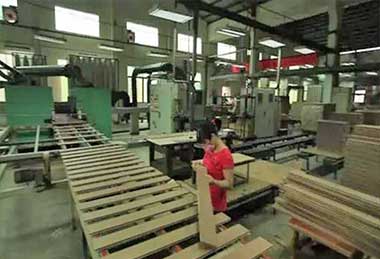
Wood , Timber & Furniture
Industrial cranes and hoists systems for timber & wood processing. Diverse overhead crane & hoists designs for material handling in sawmills or furniture plants, etc.
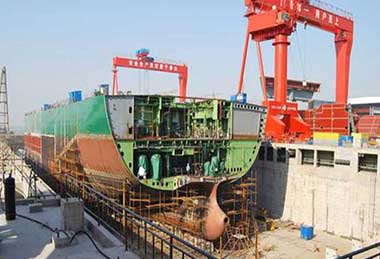
Shipbuilding & Boat Making
Industry crane systems for shipyard material handling, i.e, components assembly, boats & yachts lifting, etc. Reliable & safety industry crane system.
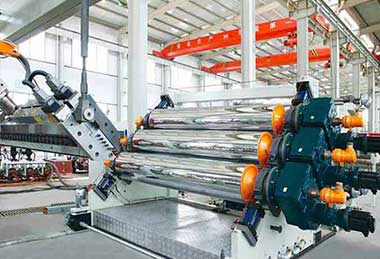
Plastic & Rubber
Industrial hoist and crane solution for plastic & rubber industry- Injection mould installation & Die exchanging- Efficient & Accurate heavy lifting systems.
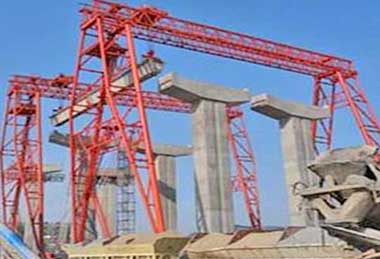
Construction and Infrastructure
Industrial material lift for construction & infrastructure- types of industry overhead travelling cranes, gantry & hoist crane system- Reliable & cost-effective.
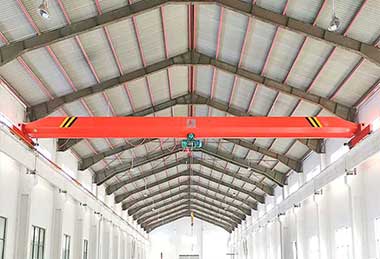
Chemical Industry
Industry cranes for chemical & petrochemical material handling, explosion proof overhead crane & hoist system for hazardous environment.
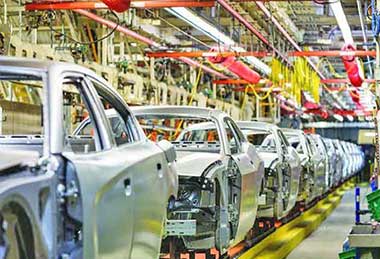
Automobile Industry
Automotive | Industrial overhead crane & hoist for automobile - Industrial cranes for automotive industry from press & assembly lines to workstations & warehouses, i.e., open winch crane & Light kbk, jib crane & chain hoists,etc.
Read more about how hoisting equipment is used in different industries and applications.
Safety tips
Electric hoisting equipment are a cost-effective alternative for hoisting activities, with a significant mechanical advantage that ensures huge loads are safely transferred. During hoisting operations, they are commonly employed as an attachment to gantries and cranes. Prior to any lifting operation, however, crucial steps must always be taken to ensure compliance with legislation and occupational health and safety. Take a look at the safety tips and advice we've compiled for you below.
Electric hoisting equipment are extremely popular in most hoisting operations
Maintaining electric hoisting equipment
- The first step is to keep the hoist clean at all times. An filthy hoist could have grease and grime on it, causing the load to slip.
- All hoist equipment must be maintained on a regular basis and must be free of faults.
- Wire ropes and chains should be greased on a regular basis to ensure smooth operation.
- The hoisting equipment must be inspected on a regular basis, with a fast examination every day and a complete inspection once a week.
- Maintenance should not be a box-ticking exercise with low-cost materials and labor.
- Being a pound wise but a pound foolish person can have serious consequences and result in millions of dollars in liabilities.
Regular inspections are insufficient. According to the LOLER 1998 rules, all hoisting equipment require annual servicing by a trained and competent specialist. The law also mandates that the date of the examination, the next due date for servicing, and any problems discovered and remedied be noted when the vehicle is serviced. The corporation that owns the hoisting equipment must keep these documents safe.
Safety when using hoists
All attachments – hooks, slings, and so forth – must be securely fastened when utilizing a hoisting equipment. This should be verified before each operation because neglect can result in a major industrial accident.hoisting equipment must be operated smoothly, with no rushed or jerky movements that could result in a potentially dangerous situation. During operation, the operation area should be free of any obstacles. To maintain safety and prevent dislodging, the hoist should be fastened and anchored in accordance with standards.
Attachments may break if the hoisting equipment is overloaded. When operating the hoisting equipment, it's critical to keep the load centered to avoid it becoming unstable during operation. The load should be appropriately secured, and if the supervisor notices that it is about to become insecure, the activity should be stopped right away. When people are present in the area of activity, hauling loads overhead is extremely dangerous and should be avoided at all costs. In the interest of workplace safety, a qualified supervisor should recommend the use of the right hoisting equipment for each project. Hoisting should only be done on static loads and never on moving ones. It is critical that the surgery be completed as soon as possible after it has begun. Leaving loads dangling in mid-air is exceedingly dangerous and should be avoided at all costs.
Environment for hoisting operations
In the interests of safety, work sites should be kept clean at all times, and no hoisting operations should be performed in an area scattered with debris or trash. Humidity affects hoisting equipment, and if kept or used in moist environments with excessive humidity, they can rust. Another crucial issue is signposting, and work locations where hoisting equipment are used should be well marked with visible signage so that all employees and visitors are aware of the dangers of approaching that area. Pest control should be done on a regular basis in all work areas, as pests can chew or gnaw through cables and other attachments, weakening them. Before beginning any lifting operation, inspection is required to guarantee that such flaws are recognized in advance.
Transporting a hoisting equipment
hoisting equipment can frequently be moved from one location to another inside the same workplace, as well as to different industrial locations. When relocating a hoist, strict adherence to health and safety regulations is critical. At the time of relocation, all activities should be completed and no load should be attached to the hoist. Prior to shipment, if the hoist is attached to a crane or gantry, it must be removed, disassembled, and properly stored.When preparing to relocate the hoist, all power sources, including electricity for electric hoisting equipment and air for air hoists, should be turned off. Hoists are quite heavy, and loading them onto the transporter may necessitate the use of additional hoisting equipment. Because of its weight, manually elevating a hoist can be unsafe and result in worker injuries. Because a hoist may contain smaller components, it is critical to use caution when preparing to move it from one site to another.
Compliance with regulatory and legal guidelines
The safe use of hoists necessitates adherence to regulations. CE marking is required, as well as a declaration of compliance that is prominently displayed and printed in English. The Provision and Use of Work Equipment Regulations 1998 (PUWR) and the Hoisting Operations and Hoisting Equipment Regulations 1998 (LOLER) must be followed (PUWER). Workers must adhere to the manufacturer's instructions as well as all warning labels connected to the hoist and its accessories.
Do you need advice and safety tips on hoisting equipment?
Our experts have been helping clients maintain the safety of their hoisting operations for more than 34 years. We can advise you on the best way to transport your hoisting equipment, or help you maintain safe working procedures when using a hoist. We can even bring you up to speed with regulatory requirements. Whatever you need, our experts are just a phone call away or leave a message to our WhatsApp/ WeChatL + 86 151 3871 1597. below.
